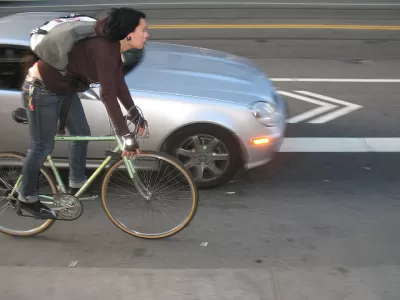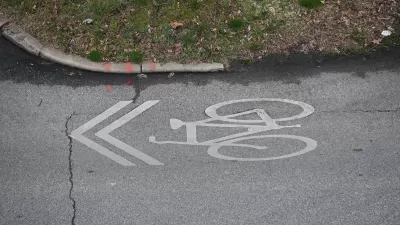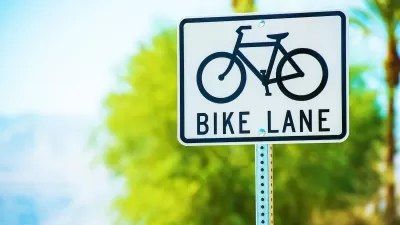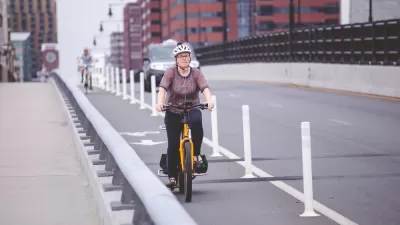The road markings known as 'sharrows' are meant to make streets safer for cyclists, but critics argue they're nothing but a convenient compromise that favors drivers and fails to improve road safety.

In a post on Medium, Peter Flax argues that sharrows––the painted road markers indicating a lane shared by cars and bicycles formally known as Shared Lane Markings (SLMs)––are "the bane of American roads: confusing, useless––worse than useless, actually––and deployed in bad faith."
While sharrows may sound "okay on paper," writes Flax, the vague signage designed to remind drivers that cyclists can use the full lane does little to improve bicyclist safety. According to Flax, "some drivers get doubly confused by the presence of sharrows, and conclude erroneously that bike riders only have the right to take the lane where this signage and marking exist." He points to a 2018 study that concludes that sharrows may provide bike riders with a "false sense of security," leading to more crashes and injuries, and often pose more danger to cyclists than not having any bike markings at all.
Flax goes on to claim that, in many cases, sharrows serve as a convenient way for politicians to pay lip service to bike activists without making significant improvements or spending very much money, "deployed as a bad-faith alternative to actually making roads safer for bike riders." Other critics agree, while research consistently shows that protected or buffered bike lanes are the best way to protect bicyclists and encourage more people to integrate bikes into their daily lives.
FULL STORY: Why Sharrows Are Bullshit

Study: Maui’s Plan to Convert Vacation Rentals to Long-Term Housing Could Cause Nearly $1 Billion Economic Loss
The plan would reduce visitor accommodation by 25,% resulting in 1,900 jobs lost.

Alabama: Trump Terminates Settlements for Black Communities Harmed By Raw Sewage
Trump deemed the landmark civil rights agreement “illegal DEI and environmental justice policy.”

Why Should We Subsidize Public Transportation?
Many public transit agencies face financial stress due to rising costs, declining fare revenue, and declining subsidies. Transit advocates must provide a strong business case for increasing public transit funding.

Paris Bike Boom Leads to Steep Drop in Air Pollution
The French city’s air quality has improved dramatically in the past 20 years, coinciding with a growth in cycling.

Why Housing Costs More to Build in California Than in Texas
Hard costs like labor and materials combined with ‘soft’ costs such as permitting make building in the San Francisco Bay Area almost three times as costly as in Texas cities.

San Diego County Sees a Rise in Urban Coyotes
San Diego County experiences a rise in urban coyotes, as sightings become prevalent throughout its urban neighbourhoods and surrounding areas.
Urban Design for Planners 1: Software Tools
This six-course series explores essential urban design concepts using open source software and equips planners with the tools they need to participate fully in the urban design process.
Planning for Universal Design
Learn the tools for implementing Universal Design in planning regulations.
Smith Gee Studio
Alamo Area Metropolitan Planning Organization
City of Santa Clarita
Institute for Housing and Urban Development Studies (IHS)
City of Grandview
Harvard GSD Executive Education
Toledo-Lucas County Plan Commissions
Salt Lake City
NYU Wagner Graduate School of Public Service





























